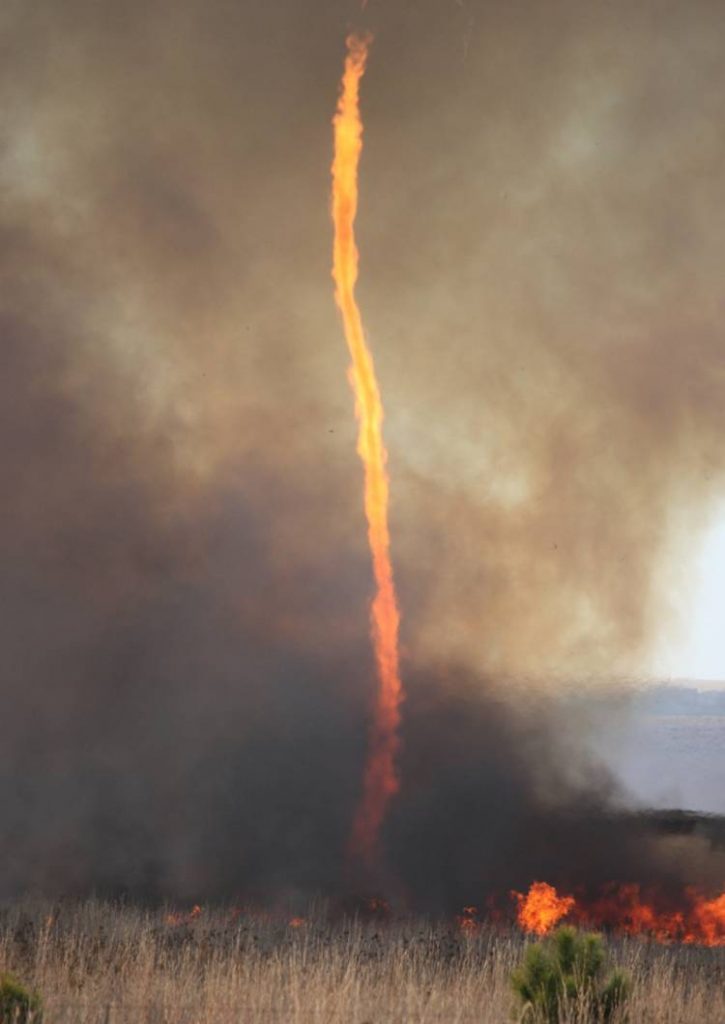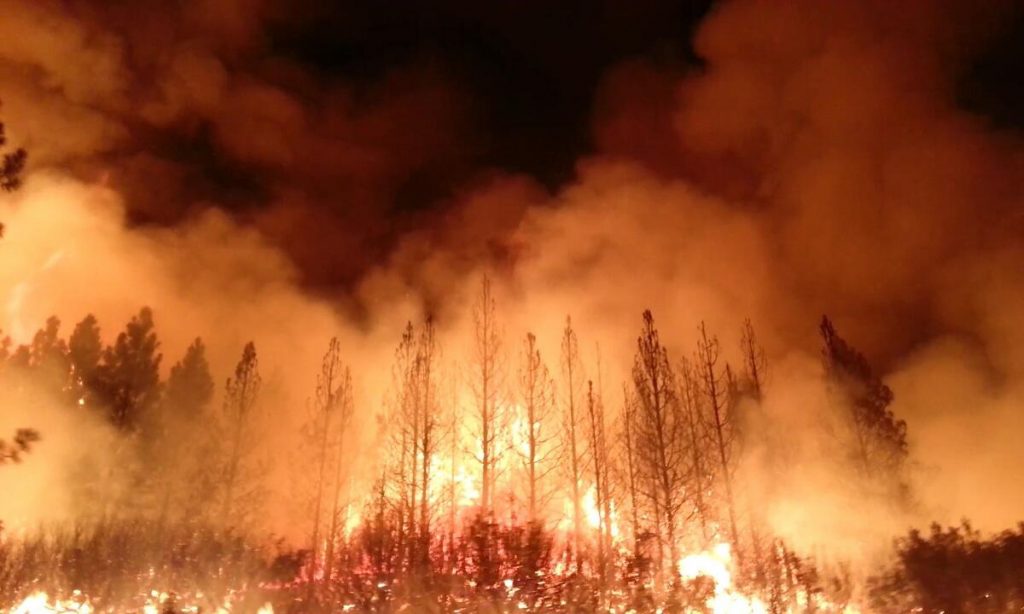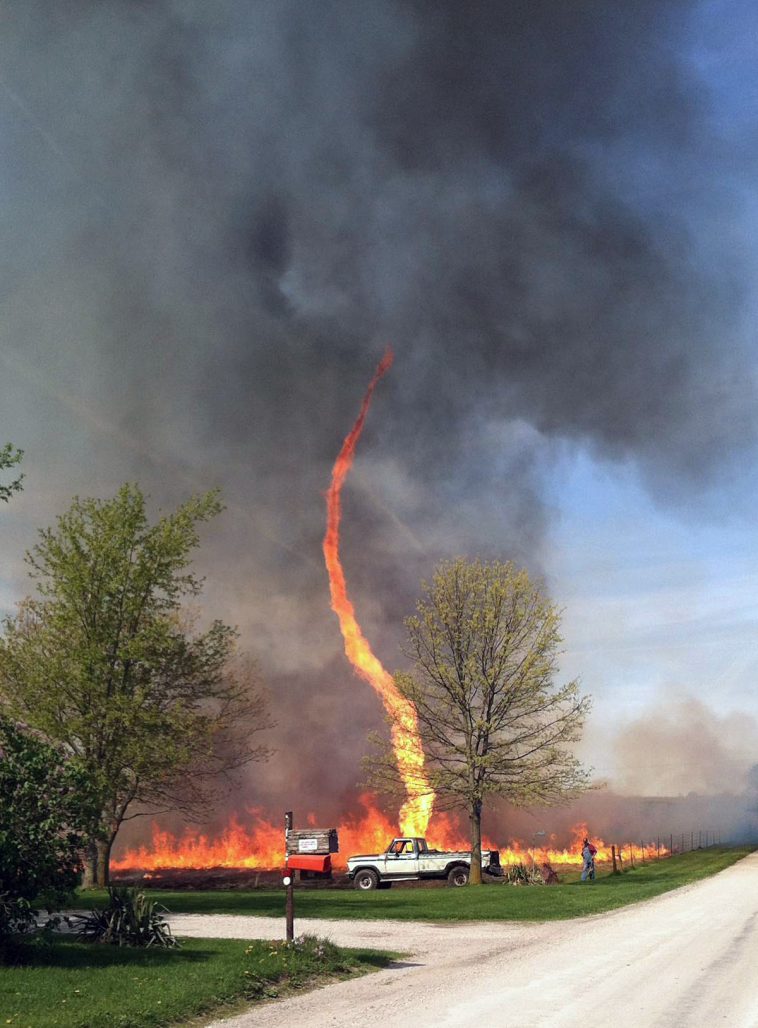A “fire tornado” doesn’t seem like it would be real. The combination of inferno and whirlwind sounds like the sort of over-the-top phenomenon you’d see in an apocalyptic disaster film. But given the right conditions, “firenados” are very real events with the potential to be incredibly destructive.
Watch the incredible footage below to see a firenado filmed by Chris Tangey in the Australian outback near Uluru:
Videos of these incredible firestorms have been recorded all over, from forest fires in California to brushfires in Australia. Essentially, wherever an intense fire rages, there’s the chance of spotting and filming a firenado these days.

What is a firenado anyway?
A firenado (also known as a fire whirl or fire twister) is a tightly rotating column of air, with a burning interior — giving the appearance of a thin vortex made of orange flames.
Firenados are initially born from the “fire” part, not the “tornado.” As wildfires burn, they create a large region of extremely hot air right above the ground. When this super-heated air interacts with cooler air higher up, the resulting updrafts and downdrafts create the exact same atmospheric instability that gives rise to dust devils.(Thunderstorm-driven tornados also form from the merger of warm, moist air and cooler, dry air — but at much larger scales).
These conditions can create a whirlwind that forms over the wildfire, churning flames and burning debris skyward into a whipping coil of fire. Some of these whirls can fling flames hundreds of feet into the sky.
Firenados can stay locked in one spot, or they can migrate across the landscape—but either way, they usually dissipate in a handful of minutes. That doesn’t make them any less dangerous or destructive, though. By sending thousands of pieces of burning material skyward—sometimes even branches and other heavy objects—firenados can potentially spread the fire far beyond its current boundaries. When embers reach heights of hundreds of feet or more, they can get pushed across the landscape by winds above the fire, touching down in fresh areas causing new fires in a process called “spotting.”

Firenados aren’t that rare
Though cell phone footage has made them much more visible in recent years, firenados aren’t a new phenomenon. In fact, some of the most horrific and deadly accounts come from many decades ago.
One of these—which occurred during the Great Kanto Earthquake in Japan in 1923—provides an example of just how incredibly dangerous firenados can be. The earthquake itself caused catastrophic damage to Yokohama, but the destruction was exacerbated by runaway fire that overtook the city in the immediate aftermath. When 44,000 people fleeing the fires funneled into one of the last remaining areas not engulfed in flames, a 300 foot-tall fire tornado—fueled by the fire and the high winds—barreled right into the crowd. Tragically, almost no one survived.
Most firenados are relatively small (though with often violent winds), and almost always occur over burning empty land. But when firenados of substantial size form over populated areas like Yokohama, the consequences can be nightmarish.

Firenados have been around for as long as there have been large-scale fires, but it’s also worth asking: will we see more firenados as global temperatures rise due to climate change? Probably.
Experts believe climate change will make droughts more frequent and more intense. The additional heat and heat wave days may lead to drier fuels for fires, creating a future with fires that are easier to start and spread to immense sizes. That means wildfires are likely to be bigger, and badder, and more common going forward. These same intense fire conditions are perfect for generating firenados.
So, decades from now, firenados may be a more familiar sight not because climate change makes their formation easier in a direct sense, but because there are simply far more extreme wildfires burning to spawn these infernal twisters.




